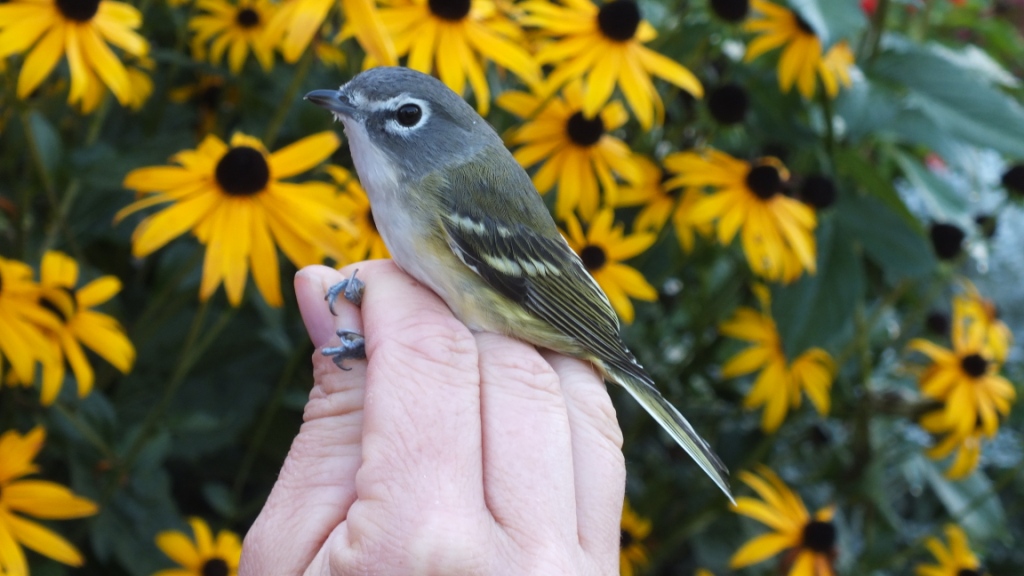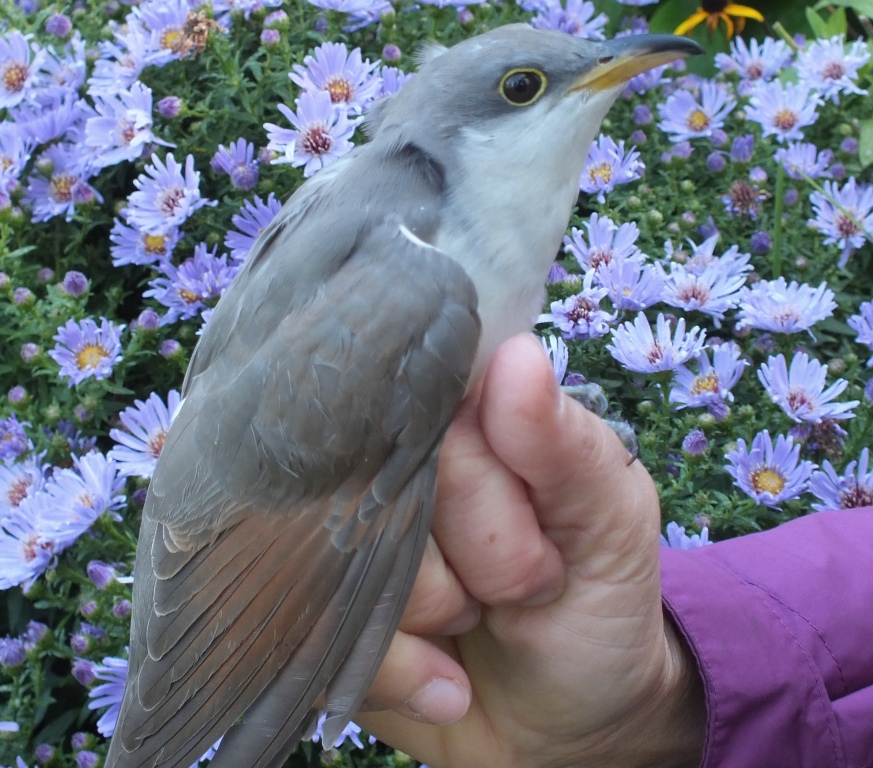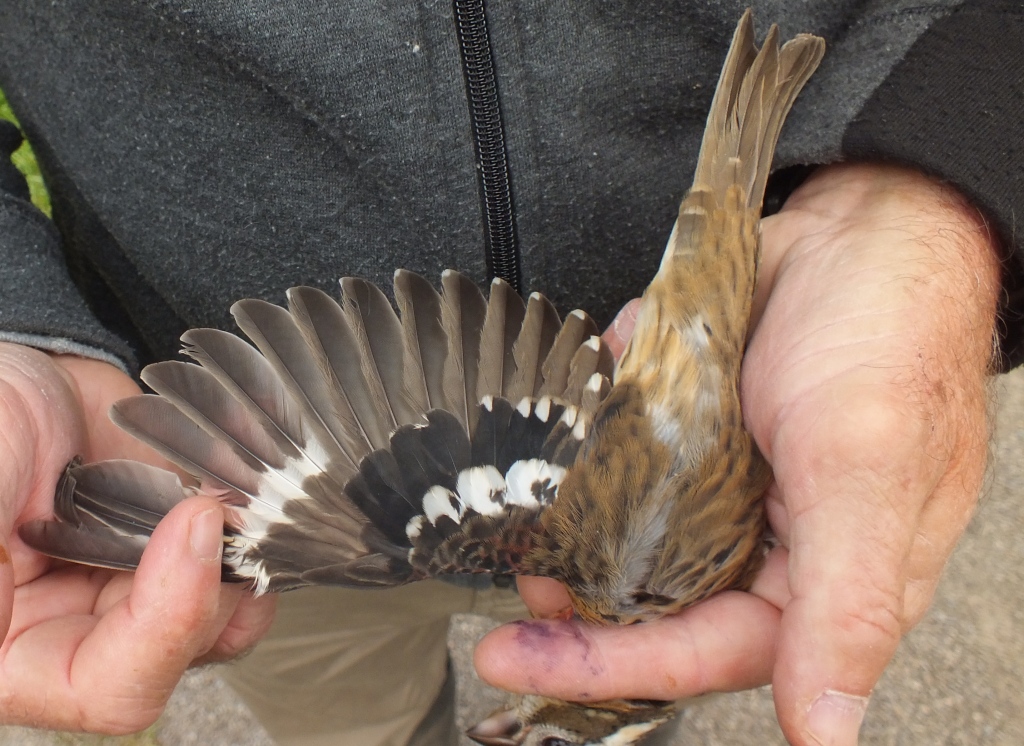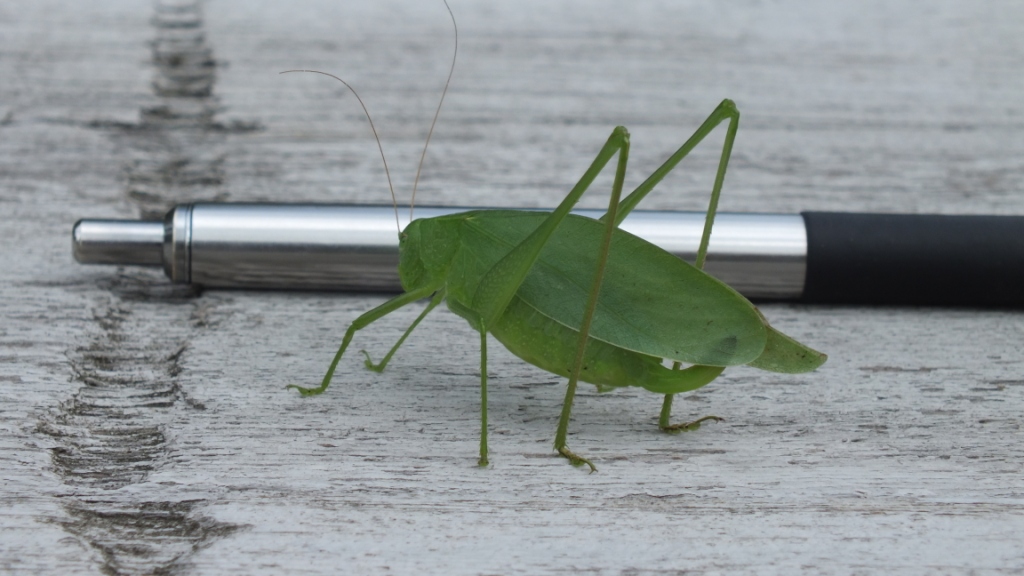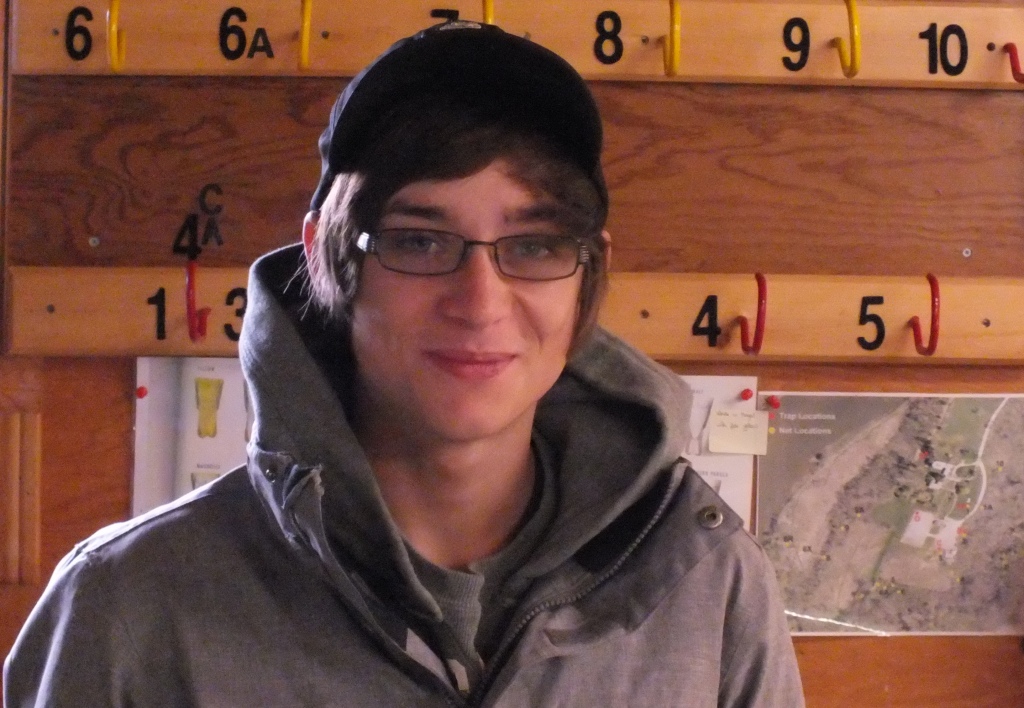On windless mornings like today, opening the nets under Orion’s impassive gaze, you become very aware of the intrusion of automobile noise coming from the nearby highway (#54). But this morning I was also aware of noise from another highway – the one overhead. Clear skies and a light northerly wind made for ideal migration conditions and I could hear the call notes from numerous birds (mostly thrushes) high in the sky as they winged their way south. The birds were certainly on the move. But, an hour before sunrise, they have an important decision to make: where to descend. Flying at a common average height of 300 meters (1,000 feet), the birds would be able to see the barrier that Lake Erie imposes. Do they descend right away (around Ruthven) and seek food and shelter? Do they continue to the north shore of the lake but descend before crossing so as not to expose themselves over water to avian predators at first light. Or do they power on and head for the south shore of the lake, throwing caution to the wind? I wonder what causes an individual bird to choose one option over the others. Physiological condition as a result of distance already travelled…fatigue? Fuel (fat) reserves? Simple fear of being in the open during the day over a habitat that provides no shelter? Probably different decisions by individuals of the same species based on the above questions.
Each day we get a different mix of birds. Today Robins were noticeably absent (we saw only 3) but we did see the first Olive-sided Flycatcher of the year (spotted by Carol who is becoming quite expert) and banded the first Blue-headed Vireo of the season.
And while we were seeing/catching new migrants we were also getting the juveniles of local late broods – Indigo Buntings and Gray Catbirds. It’s an interesting time to be out in the field watching the changes. On the whole we handled 70 birds – 41 new ones and 29 retraps – of 26 species.
We don’t often see Broad-winged Hawks (although they’re a common Ontario breeding raptor) but another small kettle of 6 birds went through early – even before the thermals got established.
Another delightful sighting was of an early morning Common Nighthawk. They were a common bird years ago when I was growing up in the east end of Hamilton. Now, they’re a rarely seen treat in the area.
And we had an interesting retrap: a Downy Woodpecker that was 8 years old!
Banded 41:
1 Mourning Dove
2 Yellow-billed Cuckoos
1 Black-capped Chickadee
1 House Wren
2 Swainson’s Thrushes
5 Gray Catbirds
1 Blue-headed Vireo
3 Red-eyed Vireos
2 Nashville Warblers
1 Bay-breasted Warbler
2 Blackpoll Warblers
1 Ovenbird
2 Common Yellowthroats
1 Scarlet Tanager
5 Rose-breasted Grosbeaks
4 Indigo Buntings
1 Song Sparrow
3 House Finches
3 American Goldfinches
ET’s: 46 spp.
Rick

